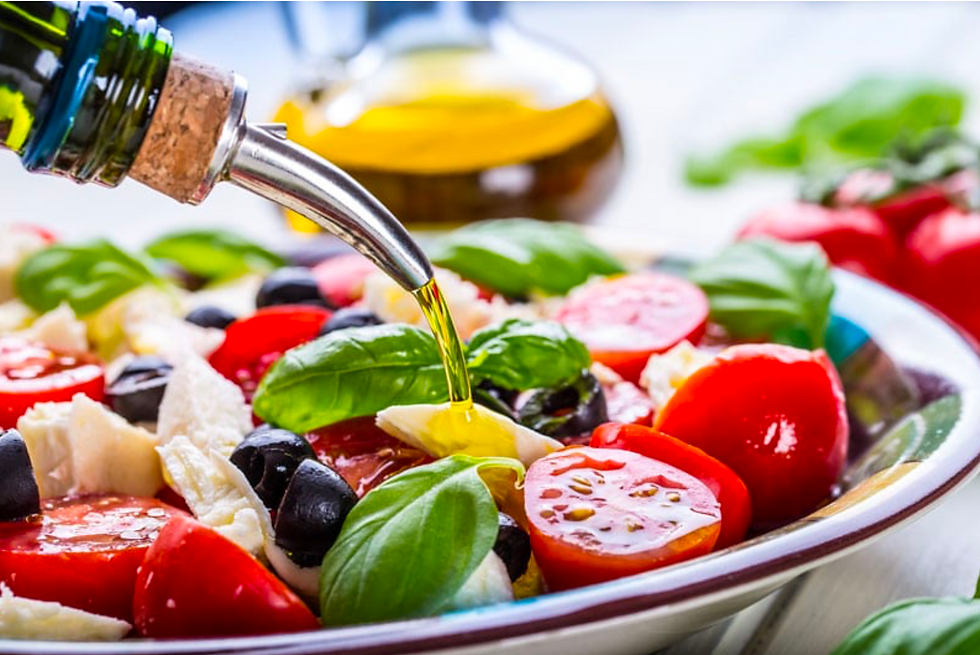A Take On Traditional Foods Of India and Pakistan!
- maryopfer
- Feb 4, 2024
- 3 min read

South Asia is a region that is often difficult to conceptualize as the cultural and culinary aspects of this region come from both Asia and Indian subcontinents. Thus incorporating many spices and herbs that are derived from all over the different regions across Asia. When it comes to traditional foods, although similar in taste, foods vary regionally. In India each region often uses what is available spice and vegetable wise due to climate, agriculture and seasons. Their dishes have a heavy emphasis on vegetarian foods as a large part of India's population is hindu therefore do not eat meat. However there is also a large muslim population in India as well, thus following halal dietary guidelines which are similar to kosher when it comes to serving meat anywhere in the country. Indian foods tend to have a heavier influence on spices whereas Pakistani cuisine although uses spices, has a less emphasis on it. Indians in the south heavily use coconut in their dishes as well, often giving dishes a sweetness despite the spices. Common spices that are used in typical Indian households include; cumin, coriander, red chili, turmeric, asafetida and many more. Not only do these spices add a combustion of flavors to the food but they also come with great health benefits. In the link below are some of the many spices that are used and ways they can be used in your kitchen at home.
https://www.masterindian.com/blogs/master-indian-spice-blog/24-top-indian-spices-and-how-to-use-them
Although Pakistan sits right on the border of India the foods eaten in both countries are different as throughout the years each country adapted their own styles of cooking, and items used thus creating a different taste of flavors when it comes to these cuisines. Pakistanis often use chicken, lamb, beef and goat as staples of their traditional dishes. Their dishes are often more protein based with rich buttery curries often eaten with roti, naan or rice. Dry fruits, nuts and seeds are also items that are commonly used by people in Pakistan as they make dishes more flavorful. These items are healthy and easy to preserve despite the warm climate in most regions. Along the coast of Karachi which is located on the southern tip of Pakistan where a variety of seafood and BBQ dishes with many different spices are prepared.
Food plays a large part in both cultures as it is the center of festivities, gatherings, weddings and more. With food playing a large role there also come health implications within this population. People of South Asian descent often are at risk for health risks such as diabetes, heart disease, and several other diseases due to genetic factors as well as diet. South Asian diets often eat most meals alongside carbohydrates such as rice, roti, dosa and naan, oftentimes eaten in uncontrolled portions. Being more mindful of how these foods can be eaten can help combat certain diseases in the long run and can help ensure mindful habits for future generations to come.
Here are tips to still enjoy traditional foods but make them healthier :
Select whole grains Choose brown rice or 100% wholewheat flour or ragi (pearl millet flour). Add ground oatmeal or soy flour or amaranth flour to your flour.
Eat foods low in saturated and trans fats Avoid ghee, butter, cream, palm oil in food
Mind Your Portions Select rice, rotis or potatoes as the starchy food filling 1⁄4 of your plate. Fill 1⁄2 your plate with leafy green vegetables and other vegetables like okra, broccoli and squash.
Sources:
Mukherjea, A., Underwood, K. C., Stewart, A. L., Ivey, S. L., & Kanaya, A. M. (2013).
What does South Asia Eat? it's time for interventions to encourage healthier and affordable food. World Bank Blogs. (n.d.). Retrieved March 13, 2023, from https://blogs.worldbank.org/endpovertyinsouthasia/what-does-south-asia-eat-its-time-inte rventions-encourage-healthier-and
LeCroy, M. N., & Stevens, J. (2017, June 1). Dietary intake and habits of South Asian immigrants living in western countries. Nutrition reviews. Retrieved March 13, 2023, from https://www.ncbi.nlm.nih.gov/pmc/articles/PMC6280935/
Aslam, J. (2017, September 6). What are the differences between Indian and Pakistani cuisine? DESIblitz. Retrieved March 13, 2023, from https://www.desiblitz.com/content/differences-between-indian-and-pakistani-cuisine



Comments